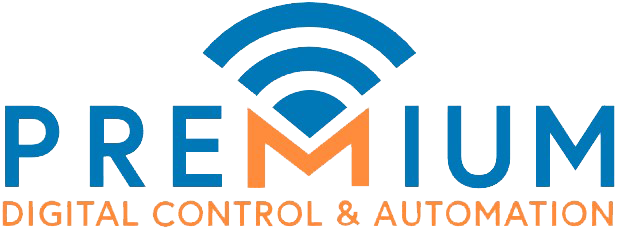In today’s digital age, businesses of all sizes rely heavily on technology to streamline their operations, increase efficiency, and remain competitive in their respective markets. One key component of a successful technology strategy is implementing smart network solutions. These solutions offer a wide range of benefits, from increasing productivity to reducing downtime and improving overall performance. In this article, we’ll explore the ROI of smart network solutions and how they can save time and money for your business.
What are Smart Network Solutions?
Smart network solutions refer to a range of advanced technologies designed to improve the way networks operate. These solutions leverage automation, artificial intelligence (AI), and machine learning (ML) to optimize network performance and reduce the time and effort required to manage network infrastructure.
Smart network solutions can take many forms, including:
- Network automation tools that automate routine network management tasks, such as configuration changes, software upgrades, and security patching.
- Network monitoring solutions that use AI and ML to detect and diagnose network issues in real-time, allowing IT teams to proactively address issues before they become critical.
- Software-defined networking (SDN) solutions that separate network control and forwarding functions, providing greater flexibility and scalability for network infrastructure.
- Cloud-based networking solutions that provide on-demand access to network resources and services, reducing the need for on-premises hardware and infrastructure.
The ROI of Smart Network Solutions

Implementing smart network solutions can provide a significant ROI for businesses, in terms of both time and money. Here are some of the key benefits of implementing smart network solutions:
Increased Productivity
One of the primary benefits of smart network solutions is increased productivity. By automating routine network management tasks, such as configuration changes and software upgrades, IT teams can free up time to focus on more strategic initiatives. This can lead to increased efficiency, faster time-to-market, and improved overall productivity.
For example, a network automation tool could be used to automatically provision new network devices, configure VLANs, and deploy security policies, saving IT teams hours of manual configuration work. Similarly, a network monitoring solution could be used to proactively identify and resolve network issues before they impact users, reducing downtime and improving employee productivity.
Improved Network Performance
Smart network solutions can also improve network performance by leveraging advanced technologies such as AI and ML to optimize network traffic, reduce latency, and improve overall network reliability. This can result in faster application performance, improved user experience, and better overall network performance.
For example, an SDN solution could be used to dynamically allocate network resources based on application requirements, ensuring that critical applications receive the necessary bandwidth and minimizing network congestion. Similarly, a network monitoring solution could be used to detect and diagnose network issues in real-time, allowing IT teams to quickly identify and resolve performance bottlenecks.
Reduced Downtime
Downtime can be costly for businesses, both in terms of lost productivity and lost revenue. Smart network solutions can help reduce downtime by proactively identifying and resolving network issues before they impact users. This can result in improved availability and uptime for critical business applications, reducing the risk of downtime-related costs.
For example, a network monitoring solution could be used to detect and diagnose network issues in real-time, allowing IT teams to quickly identify and resolve issues before they impact users. Similarly, a network automation tool could be used to automatically deploy security patches and software updates, reducing the risk of downtime due to security vulnerabilities.
Cost Savings
Implementing smart network solutions can also result in significant cost savings for businesses. By automating routine network management tasks, businesses can reduce the need for manual intervention, which can result in lower labor costs and improved efficiency. Similarly, by improving network performance and reducing downtime, businesses can save money by avoiding costly downtime-related expenses.
For example, a network automation tool could be used to automate routine configuration changes, reducing the need for manual intervention and potentially reducing labor costs. A network monitoring solution could help detect and diagnose network issues before they become critical, avoiding the need for costly emergency support or downtime-related expenses.
Furthermore, cloud-based networking solutions can provide significant cost savings by reducing the need for on-premises hardware and infrastructure. Cloud-based networking solutions can offer on-demand access to network resources and services, allowing businesses to scale up or down as needed, without the need to invest in expensive hardware and infrastructure.
Scalability and Flexibility
Smart network solutions can also offer businesses greater scalability and flexibility. SDN solutions, for example, can provide greater flexibility in network infrastructure by separating network control and forwarding functions. This can allow businesses to quickly and easily provision new network resources as needed, without the need for significant infrastructure changes.
Similarly, cloud-based networking solutions can offer businesses greater scalability by providing on-demand access to network resources and services. This refers to the ability to access network resources and services as needed, without the need for physical hardware or infrastructure. Cloud-based networking solutions, for example, provide on-demand access to network resources and services through the internet. This means that businesses can access network resources and services, such as storage, computing power, and applications, as needed, without having to invest in physical hardware or infrastructure.
On-demand access to network resources and services can offer businesses greater flexibility and scalability, allowing them to quickly and easily scale up or down as needed without the need for significant infrastructure changes. This can be particularly beneficial for businesses with fluctuating demand for network resources and services. With on-demand access, businesses can avoid the need to purchase and maintain expensive hardware and infrastructure, which can result in significant cost savings over time.
Conclusion
In today’s fast-paced digital environment, businesses need to stay competitive by leveraging advanced technologies to optimize their operations and increase efficiency. Implementing smart network solutions can provide significant ROI in terms of both time and money, by increasing productivity, improving network performance, reducing downtime, and offering greater scalability and flexibility.
By automating routine network management tasks, businesses can free up time to focus on more strategic initiatives, resulting in increased efficiency and productivity. Additionally, smart network solutions can help businesses avoid costly downtime-related expenses and reduce the need for manual intervention, resulting in significant cost savings.
Overall, implementing smart network solutions can help businesses stay competitive in their respective markets, by offering advanced technologies that improve efficiency, productivity, and overall network performance.


